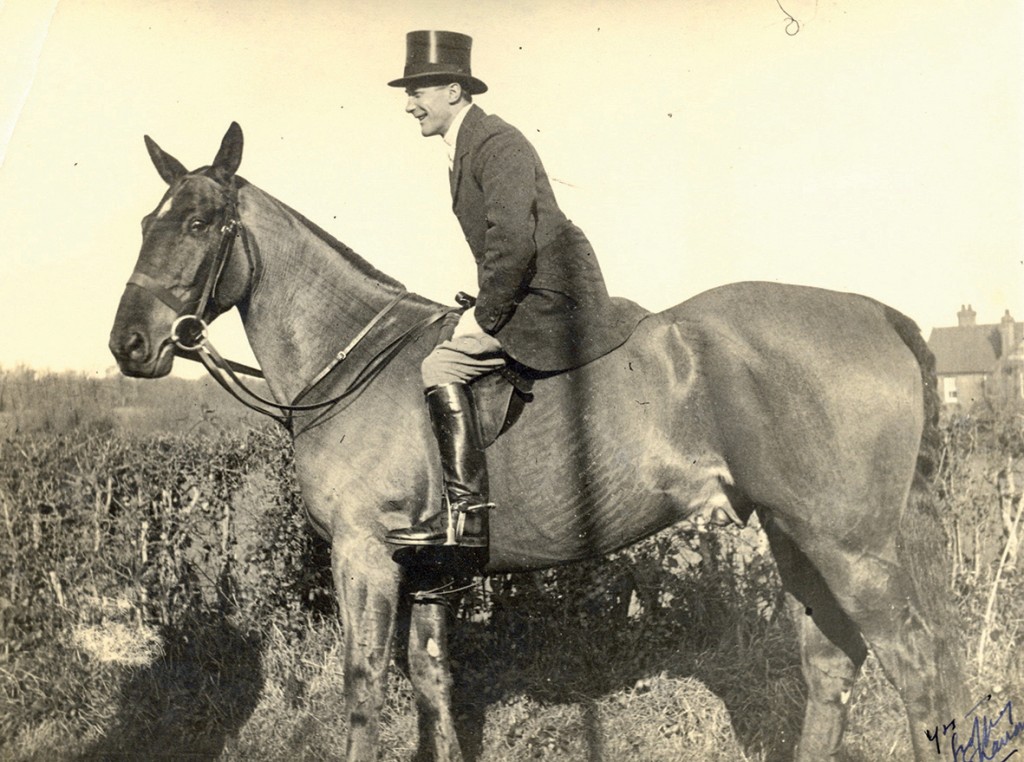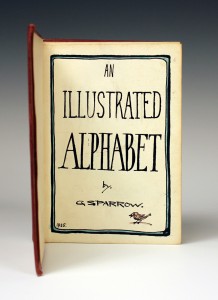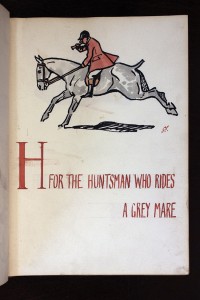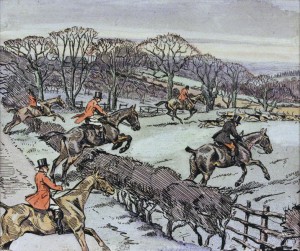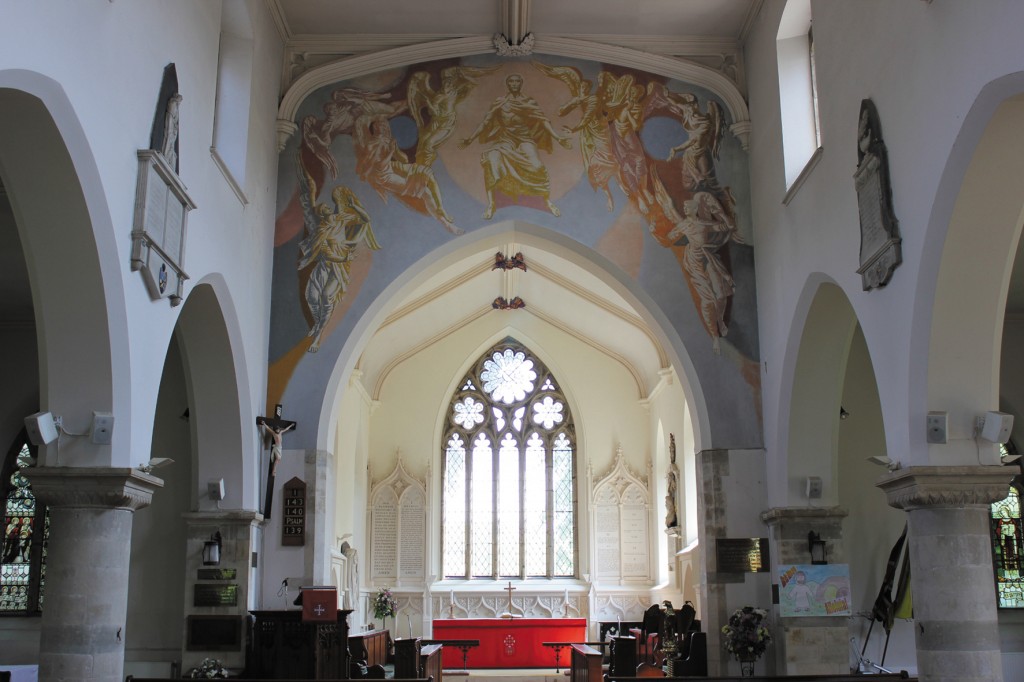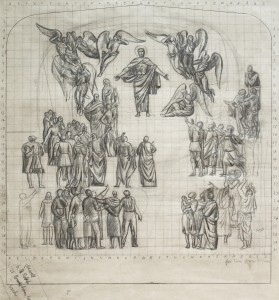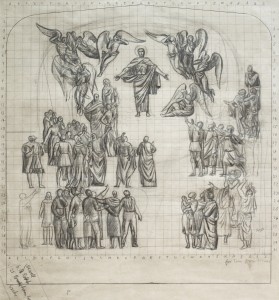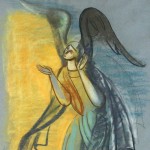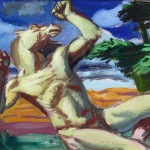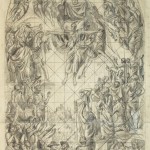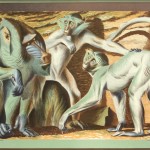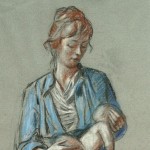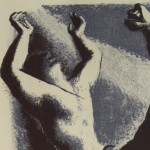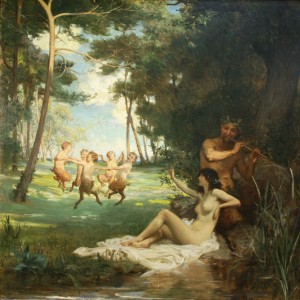England’s changing seasons and landscape afford a particularly generous accompaniment to my life in Sussex. The artist Clare Leighton shared this delight in the rhythms of nature and the countryside.
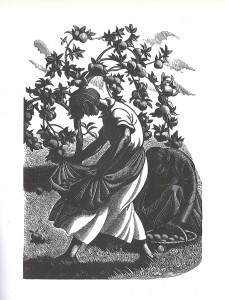
In the early part of the 20th century there was a revival of wood engraving in Britain. The softness of line and the strength of contrast in the black and white seemed to articulate something particular to a generation of people who were united in their experience of war. Clare Leighton belonged to this movement and generation. Today she is highly regarded by art historians and collectors. Her work combines a deep understanding of life and love, informed by her Christian faith, with a captivating simplicity and honesty. Many of her compositions are characterized by the use of a series of underlying curves, which at once unite the subjects in her pictures while giving a quality of journeying and movement.
Against some opposition from her family, Clare Leighton persuaded her parents to allow her to attend the Brighton School of Art. From there she went to the Slade School of Art, where she studied under Sir Henry Tonks between 1923 and 1924. Needing to earn a living, she left the Slade and enrolled for evening classes at the Central School of Arts and Crafts. She was friends with Hilaire Belloc, who lived at Shipley windmill near Horsham, and Eric Gill, who was at this point living in Ditchling.
Before the war she wrote and illustrated a series of books, which included The Farmer’s Year (1933) and Four Hedges: A Gardener’s Chronicle (1935). They reflect her fondness for the countryside and her empathy with rural workers and their husbandry. Although her work is modern, it follows in the rich tradition of English Romanticism.
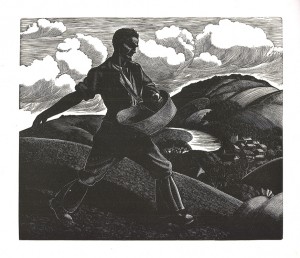
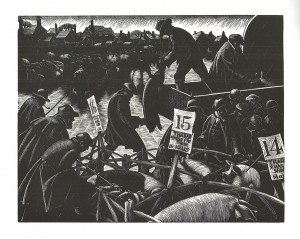
Nicholas Toovey heads the pictures and books departments at Toovey’s. With an interest in both these fields of collecting, it is understandable why this artist should particularly appeal to him. “I have long admired Clare Leighton’s work,” says Nick. “She was part of the revival of wood engraving at the start of the 20th century. It fascinates me that from only two colours, black and white, an artist can create a sense of light, movement, tone and hue.” Nick’s thoughts resonate with Leighton’s own reflections on the art of creating a woodblock engraving. She wrote, “The discipline of engraving is demanding, and for a perfectionist, exhaustingly so. Harnessed to this need is to interpret colour and tone through the limitation of black and white.”
In Clare Leighton’s ‘April, Sowing’ from The Farmer’s Year, the curve of the sower’s posture implies movement and unites him with the folds of the hills beneath the scudding clouds, which are reflected in the river. Leighton carves her woodblock with great skill and delicacy, creating mass, light and shade through the use of crosshatching. The curved compositional forms and quality of tone are again beautifully illustrated in ‘A Lap Full of Windfalls’ from Four Hedges: A Gardener’s Chronicle.
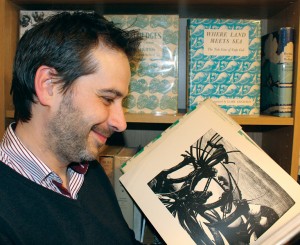
Nick draws my attention to ‘The Fat Stock Market’ from ‘December’ in The Farmer’s Year and says, “Leighton’s execution of carved line is always so precise. For the wood engraver there is no possibility of changing a mistake; once a line is engraved it must stay. There is a directness in the depiction of this livestock market and a strong feeling of empathy with these stewards of the land on this dark and damp December day. The black and white provides this scene with a real sense of drama.”
Here is an artist connected with her life and times, the countryside and its people, all of which inspired her to give expression to life and love through her woodblock prints.
Clare Leighton’s decision to emigrate to America in 1939 was bound up with her decision to end her relationship with the journalist and writer Henry Noel Brailsford. She settled in North Carolina and enjoyed a full artistic career, which included teaching at Duke University. Clare Leighton’s work is represented in many national collections, including the British Museum in London and the Metropolitan Museum of Art in New York. Nick and I are excited that Toovey’s is supporting the exhibition Clare Leighton: Working Life, which has just opened at Pallant House Gallery in Chichester. This excellent show has been organised by Simon Martin and provides a wonderful opportunity to see a breadth of Clare Leighton’s work. It runs until 24th February 2014; for further information go to www.pallant.org.uk.
By Revd. Rupert Toovey. Originally published on 18th December 2013 in the West Sussex Gazette.
